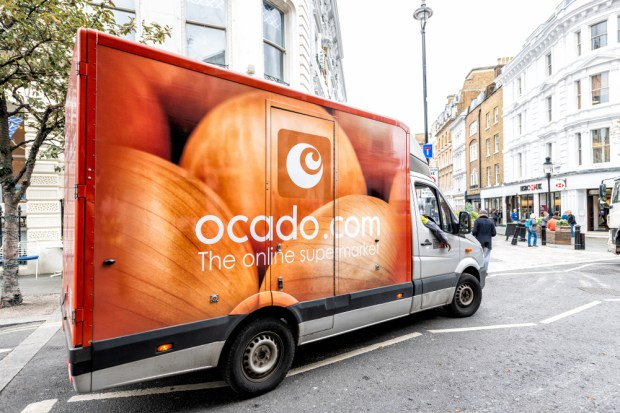Ocado CEO: U.S. Lags Behind Other Countries on eGrocery Profitability

As United States grocers look to seize on the digital shift, they may need to update their infrastructure to make eCommerce worth its while in the long run, according to Ocado CEO Tim Steiner.
On a call with analysts Tuesday (July 18) discussing grocery technology company Ocado Group’s financial results for the first half of 2023, Steiner noted that the United States has “a lot of growth to go” when it comes to the economics of online grocery, relative to other countries, but he maintained that someday eGrocery would be more profitable than brick-and-mortar.
“There’s a lot for [the U.S.] to learn and there’s changes they need to make on their own software front and stuff to drive the type of efficiencies that we would look for in other markets. But it is theoretically still the goal that those warehouses in the U.S. will generate higher EBITDA and higher PBT returns than the stores can.”
Ocado’s presence in the country is tied up with leading U.S. pure-play grocer Kroger, with the two companies opening up automated grocery fulfillment centers for delivery orders together. Earlier this year, Steiner reportedly stated that Kroger is slowing down the rollout of these eCommerce facilities but remains committed to opening more. The grocer shared in its last earnings report that delivery sales were up by 30% year over year.
Responding to a question about productivity at Kroger’s facilities compared to those in the United Kingdom, Steiner cited produce packaging as an area where the business is not as efficient as it could be.
“They do more manual food prep in the U.S. supermarket than they do in the U.K. Their produce is less packaged and barcoded and stuff like that,” he explained.
Overall, online grocery adoption is on the rise across the United States, according to data from PYMNTS’ study “Tracking the Digital Payments Takeover: Catching the Coming eCommerce Wave,” created in collaboration with Amazon Web Services, which draws from an April survey of 2,700 U.S. consumers.
The study reveals that 87% of grocery transactions are carried out in stores, and only 12% occur online. However, the study found that 32% of shoppers said they are very or extremely likely to increase their online grocery purchases in the next 12 months.
Kroger Chairman and CEO Rodney McMullen shared on the company’s last earnings call that “improvements in digital profitability” are a key component in the chain’s overall push to boost margins.
“We believe digital will continue to be an important growth driver and anticipate double-digit sales increases will continue for the remainder of 2023,” McMullen said, later adding, “we have a great partnership with Ocado, and we’re making good progress, especially on [our first location, in Monroe, Ohio], on ramping that facility up. And now, we’re in the process of rolling those learnings out to the other sheds.”
For now, in the United States, delivery is only one piece of the eGrocery puzzle. In fact, PYMNTS research reveals that curbside pickup is significantly more popular than either on-demand or later-date delivery.

